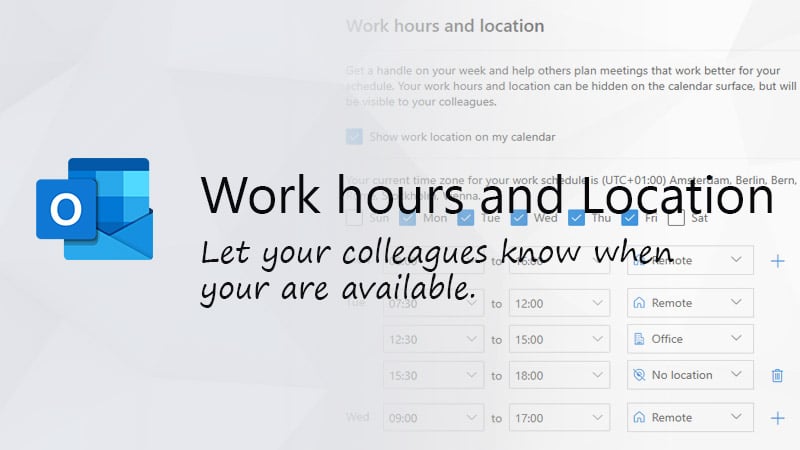#sponsored
With SharePoint and OneDrive, you don’t need a local file server anymore. You get plenty of storage space with your Microsoft 365 subscription, and it’s always available and super easy to use. But what about the backup?
A common misconception is that you don’t need to worry about the backup of SharePoint Online. The truth is that the backup of your SharePoint Online data is your own responsibility.
Microsoft does make backups of SharePoint Online, that’s true. The data is even mirrored between multiple data centers. But what most people don’t know is that these backups are primarily used for disaster recovery, and not for on-demand restore jobs.
In this article, we take a look at why it’s important to back up SharePoint Online, as well as the built-in options to protect your data. Additionally, we talk about why you might want to use a third-party backup solution.
The important of SharePoint Online backup
Even though all your data is stored in the cloud, data loss can still occur. The most common cause for data loss is user error.
People make mistakes, they overwrite the wrong file, delete an entire folder accidentally, or forget to stop synchronization before removing the local copy—it all happens. I have even seen Team owners deleting the whole Team by accident, including the attached SharePoint site.
Likewise, ransomware or malware is also still a threat to data stored in SharePoint Online. Infections can take place on client devices and sync back to SharePoint Online. Some malware is even capable of copying the files, encrypting them, and then deleting the original files.
No matter what the cause is, even with SharePoint Online, you will need to think about your backup options.
Built-in options to protect data in SharePoint Online
Microsoft offers a range of tools and solutions to protect your data. Some would even argue that you don’t need a third-party backup solution at all for SharePoint Online: the built-in tools should be more than sufficient to protect your data. And that is partially true—when properly configured, the built-in tools can preserve pretty much all your data.
Let’s take a look at the different options that we have to protect our data.
Versioning
Versioning is the first step when it comes to preventing data loss in SharePoint Online. New versions of files are automatically created when a file is modified or re-uploaded. This allows you to go back to an older version of the file at any time you want. You can even restore an older version of the file.
SharePoint Online Recycle bins
SharePoint Online comes with two recycle bins. When a file is deleted in SharePoint Online or OneDrive, it goes to the (first-stage) recycle bin. It’s kept for 93 days total in the recycle bin unless it is manually deleted from the recycle bin.
Files that are deleted from the first-stage recycle bin are moved to the second-stage recycle bin. Only site administrators have access to the second stage, preventing users from accidentally emptying the second stage as well.
Files are kept for the remaining 93 days in the second-stage recycle bin. So, all files are always retained 93 days in total from the moment that they are deleted.
In addition, Microsoft also backs up all content for 14 additional days after the actual deletion1 (more about that later).
This means that all files are backed up for 107 days in total after deletion. But after 107 days, you can’t restore the file or folders anymore.
Retention Policies
Retention policies are designed to determine which data can be deleted and when. Policy rules allow you to target specific content based on conditions such as keywords and determine how long you want to preserve that data.
The biggest advantage of retention policies is that they create an immutable copy of the data when an item is created or modified. This allows you to always restore the original version of the file.
Retention policies can even be configured in such a way that once they are turned on, they can’t be changed or turned off anymore.
But keep in mind though that retained data counts towards your SharePoint Online storage quota.
Microsoft Support restore request
As mentioned, Microsoft does perform backups of your data. They create a backup every 12 hours and keep it for 14 days. In this way, in case of data loss, the global administrator can contact Microsoft with a restore request.
But there is one catch here: you can’t request an individual file or folder restore. Microsoft only restores the complete site collection to its original location.
Given that a restore request can take a couple of days to complete, this might not be a good option to solely rely on.
Why you should backup SharePoint Online
So why do you need to back up SharePoint Online? The built-in options might seem to be sufficient, but in my opinion, they are not.
The biggest problem with the built-in solutions is the ease of restoring data. Recycle bins are fine when you need to restore a couple of files. But have you ever tried restoring a complete document library because someone forgot to turn off synchronization before deleting the synced files?
You can’t simply select a folder or document library in the recycle bin. The only option is to select all files per page and restore them. Or you might have to use a PowerShell script to select the correct files from the recycle bin and restore them.
And what are your options after 93 days? It’s not guaranteed that lost data is noticed within this timespan. Third-party backup solutions, like Altaro Office 365 backup, allow you to preserve and restore data indefinitely.
You could create a retention policy and preserve all data forever. It will cost you some SharePoint Online storage, but that isn’t really expensive. But again, have you tried restoring data with content search or eDiscovery?
You will need to collect all the data based on date, location, or keywords, then export it, and then import it manually back to SharePoint. It is possible to write a PowerShell script for this, but that is not really convenient or easy to use.
As the last option, we have the backup from Microsoft. This is only an option when you need to restore the complete site collection, for example, after a ransomware attack. But for individual files or folders, restoring is really not an option. Also, keep in mind that it can take a couple of days before the restore job is complete.
Wrapping up
Make sure that you understand what options Microsoft offers and what your company needs when it comes to the backup of SharePoint Online.
The built-in tools might be enough for some organizations to protect their SharePoint Online data. But the biggest challenge is when you need to restore a lot of items (complete document libraries or whole SharePoint sites). Or when you need to go back beyond the 93 days of the recycle bins.
This is where third-party backup solutions like Altaro Office 365 backup are a really good option. They make restoring data a lot easier, saving your time and money, and they are capable of retrieving data from a longer time period after it’s lost.





I must agree with Rudy, that attempting real-life “sorry I deleted the folder at something I think a week or two ago” is not very easy at all. Compare this against the Dropbox solution. Due to company policy I have been forced off Dropbox to SharePoint and yes SharePoint has many good features, but file recover is not one of them
Retention policies can be configured to extend the 93 day limit, and as all files and folders will have been deleted at the same time restoring from the recycle bin shouldn’t be a too onerous, and the worst case fix would be to sync the library, break the sync, roll the library back two weeks and then copy back the files from the unsynched copy, overwriting any files already there.
If SharePoint online is configured, so all files and folders not shoved in one massive library, the rollback option is also more useful than if this isn’t the case.
I’m not saying that third party backups can’t make some things easier, but that in my view they’re only essential if you don’t trust MS to make backups as they claim to, or just don’t feel comfortable with your files just being in Microsoft’s possession.
You seem to have completely missed out the option to revert a library to its condition at any point in the last 30 days, which to my mind negates most of your claims about needing a third party backup?
Also while a third party backup offers assume extra features it also has to be monitored to check it’s working correctly, which you can guarantee our clients wouldn’t do and with over 80 365 clients we’re not willing to accept responsibility for, whereas if you rely on the adequate MS backup options there’s no need to check anything, as if data is on 365 you know the backup’s running correctly.
You can indeed revert a complete library, but that is not a workable backup option in all cases. What if you need to restore a folder from 2 weeks ago? Doing that from the recycle bin can be a hideous task, finding and selecting all the files that need to be restored from the folder. A complete restore of the library will erase new files that are created in the meantime.
A third-party backup solution just makes restoring a lot easier and it gives you also the option to restore data beyond the 93 days limit. About the monitoring, that is either up to the MSP or the client. Proper alerting should be sufficient in most cases. And yes, backups need regular checking and restore tests.